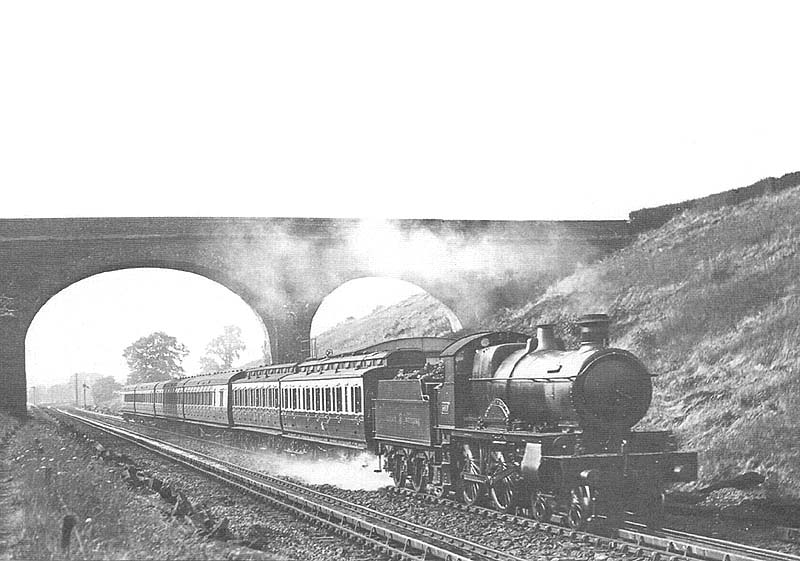|
|
 |
 |
|
GWR Route: Banbury to Wolverhampton
Rowington Junction & Troughs: gwrrj2160
 |
An unidentified GWR 4-4-0 County Class locomotive with class A
headcode (indicated by the red lamps on either end of the buffer beam) hauling
an up express over Rowington troughs. The County Class were a class of 4-4-0
steam locomotives for express passenger train work introduced in 1904 in a
batch of ten. Two more batches followed in 1906 and 1912 with minor
differences. They were designed by Churchward, who used standard components to
produce a four-coupled version of his Saint Class 4-6-0s. They were the last
new GWR 4-4-0 design and by far the most modern, with inside frames and outside
cylinders. They were designed as a part of Churchward's standardisation plan,
but were found to have a front end too powerful for the wheel arrangement and
all were withdrawn by the early 1930s. They were designed, in part, for the
Hereford to Shrewsbury LNWR line over which the GWR had running powers, but on
which they were expressly forbidden to use 4-6-0 locomotives. The 4-4-0
Counties were in effect a shortened GWR 29xx Class, providing engines powerful
enough for the trains but with the requisite four coupled wheels.
The first two coaches with the clerestory roofs are restaurant
cars in the distinctive Great Western Railway chocolate and cream livery
carrying the central garter crest. Although this livery was reintroduced in
1922, it was not until April 1927 that the fussy lining of mouldings and pseudo
panels was discontinued, which allows the photograph to be dated to after this.
The coach roof vents indicate that the kitchens in both restaurant cars are
centrally positioned, which corresponds to the diagram H7 layout. Four 56 foot
long, ganged composite (originally third class) restaurant cars were built to
this diagram (lots 1010 and 1011) at a cost of £1,770 each. They could
seat eight first class and eighteen other class passengers in separate saloons.
Officially called Dinning Cars they were initially used in January 1903 as part
of the Paddington – Newport - Cardiff and Paddington – Torquay /
Exeter services. After 1907 they were renumbered 9518 to 9521 and shortly after
this were displaced from the prestige services by a fleet of newly built
restaurant cars. They were transferred to secondary express routes and it is
known that a pair was used on the Paddington to Birmingham (via Didcot and
Oxford) express services. The last of the four restaurant cars to remain in
service was No 9518 (previously No 7580) being withdrawn in 1936 and recovered
for preservation. It is currently in storage with the Great Western Society at
Didcot. Behind the two restaurant cars is a rake of four toplight corridor
coaches, but Carriage Working Documents indicate that further coaches would
have been added at either Banbury or Oxford.
Robert Ferris
 back back

|
|
|
